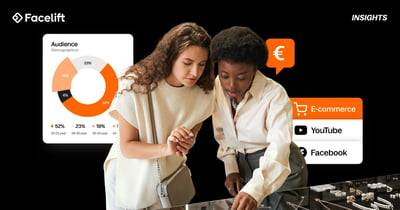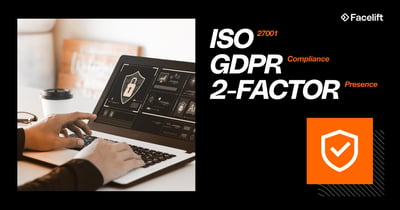Interview with Michael Groß, YouTube Content Solutions Lead (Part 1)
YouTube has more than 2.52 billion registered users worldwide. 52 percent of all internet users are on YouTube at least once in a month. With a watch time of over one billion hours a day YouTube is still the largest audio-visual platform. Since being available in 91 countries and 80 languages, YouTube now reaches 95% of all Internet users. And with the launch of YouTube Shorts Alphabet is entering the market of shortform video content. These facts makes YouTube an indispensable advertising tool.
Which brands are already making the most of YouTube's versatility for commercial success? How do you manage to use YouTube as a branding and performance channel and what is key for captivating storytelling on YouTube? We had the pleasure of interviewing Michael Groß, YouTube Content Solutions Lead, and were left with some highly interesting insights for your social media marketing efforts.
What do you think, Michael: What does YouTube have that other social media channels don’t?
"YouTube has been established since 2006 and has yet to lose any of its relevance. On the contrary, it is a state-of-the-art medium that generates billions of views every single day. It is a public channel, accessible to all, and not bound by any demographic limits. By being able to personalise its content, it also binds numerous interest-based target audiences."
What else is accounting for the popularity of this platform?
"The makeup of YouTube is close to our makeup. Hardly any other social network is able to tell stories as well as YouTube. It offers more than simple written words, more than sound, more than visual content: It is an all-in-one platform and, in this way, also appeals to our emotions and our motivation - in addition to speaking to our cognitive abilities."
Which facts are of particular interest to brands?
"First of all, YouTube achieves the highest advertising visibility for ads on the Internet at 96%! The reach of this platform is enormous. People easily forget that it is the second largest search engine and therefore plays an important part when it comes to SEO. And: YouTube features versatile targeting signals - tailored to the intentions of the different interests groups.
Most brands already have their own YouTube channel. What do you think: Do they make optimal use of their channels in their ad campaign work?
YouTube is extremely versatile. In my opinion, too many brands are using this platform in a rather one-sided manner. But there are exceptions.
... such as?
Take EDEKA or the BVG, for example. Both of them have deliberately produced spots for this platform and also profited from a viral effect. They told exciting stories and extended their online video strategy via YouTube. This makes sense, because some target groups can no longer be reached via traditional TV advertising.
The public transport company of Berlin is well known for its self-mockery videos on YouTube.
What should brands pay particular attention to in this usage scenario?
"The most serious mistake would be to not adapt the creative process to YouTube. Any TV commercial should be redesigned so that it fits this medium and also works for mobile users."
Could you name some further usage scenarios, please?
"Let’s talk about eBay Kleinanzeigen (Classifieds) for a moment. They have developed a brand series and marketed it via their own YouTube channel. The serial format shines a light on different sections again and again, such as: Daily life in student flat share, in which eBay is subtly mentioned several times:
Another usage scenario is the always-on channel. Similar to the serial format, it mimics the customer journey. Take IKEA Germany, for example: For a few weeks now, IKEA has provided answers to standard user questions, such as "How do I put together an IKEA cabinet?", via YouTube. This is how IKEA reaches product-interested users in particular. Companies that have gotten to this place have realised that they have to behave in a way that matches their target group."
What is the biggest added value for brands?
"That existing and potential customers are spending as much time with them as possible. A brand channel that entertains its target audience with exciting content can be an essential advertising tool. We have analysed hundreds of YouTube campaigns and come to the following conclusion:
The longer the viewer engages with the content, the more the company is on the road to success – every single second. The more attention, the stronger the effect. Good stories are also good for business in this sense."
YouTube is thus both a branding and performance channel?
"Correct!"
How can brands achieve better performance by utilising YouTube?
"By offering the download of their app via "TrueView for Action" ads, for example, or by inviting viewers to visit their store. When a user visits their channel, watching videos and entering the brand world, the likelihood that there is already an affinity or inclination towards the brand is rather high, on the one hand. On the other hand, brands receive information about the visit and can then once again address the user via retargeting - for example, via banners or a commercial - and thus achieve a purely transactional goal, such as having the user visit their website. When brands become active on YouTube, they can more easily achieve the desired conversion."
What are the prerequisites for this and what are the biggest challenges for brands?
"This varies from brand to brand. Generally speaking, brands need to engage with YouTube and their communities. Some of the key questions are: What is the platform able to do? Which culture do the communities cultivate? What language do they speak? In advertising communication, it is essential to strike the right note to appeal to the target audience. But you also have to know your audience well. Understanding your audience is a bigger challenge. It takes time to get to know your audience and evaluate it well. Moreover, YouTube is comparatively complex and time-consuming."
It is not enough to publish a post wishing everyone a nice day in the morning. When using YouTube,
you must first produce a video.
Are there any specific industries that can benefit most from YouTube?
"Fundamentally, YouTube is an exciting marketing platform for all industries. However, we see that YouTube is an important source of information, especially for the lifestyle, retail, and automotive industries. Before buying a car, quite a bit of product research is taking place on YouTube, for example. Information about smartphones and other tech gadgets is also very popular on YouTube. In addition, the music and film industry benefits from this platform, of course. However, the following is basically true:
Once you have gotten the story is right, YouTube is a playground for all brands and industries.
If we think of the “Like a Bosch” spot, we find that even supposedly conservative technology and service companies can score points when they experiment with stories.
B2B communication can succeed on YouTube as well. I am thinking of the Volvo trucks spot featuring the epic split by Jean-Claude Van Damme."




